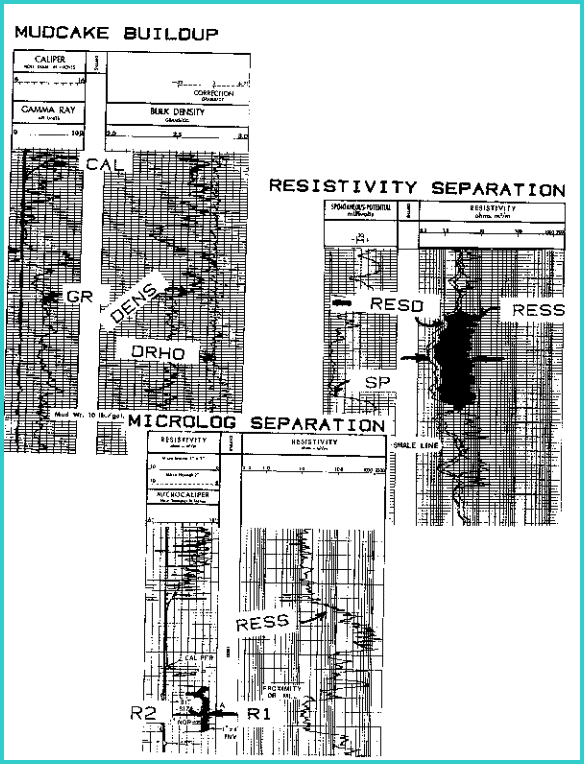|
 EYEBALLING
PERMEABILITY
EYEBALLING
PERMEABILITY
While shale content and porosity are directly related to specific
log readings, the formation permeability is not easily correlated
with any single log value. Indications of permeability can be
found from some of the following:
1.
Relatively low shale content as seen on the gamma ray log or the
SP log, combined with some porosity on the sonic, density or neutron
logs.
2.
Mud cake buildup as seen on the caliper log. (See top left illustration).
3.
Separation between the deep induction (or any deep resistivity
device) and the shallow resistivity device as in the top right
illustration. Separation is seen when two logs
do not read roughly the same resistivity value, because fluid
from the mud has invaded the formation. This causes a different
resistivity to occur close to the borehole wall compared to deeper
in the formation. This method is not applicable in high resistivity
due to borehole effect.
4.
Positive separation on a microlog, if the log is available, is
another indicator of permeability. Positive separation means that
the dotted curve (R2) reads higher resistivity than the solid
curve (R1).
5.
Porosity of any significant amount usually indicates permeability.
However, the amount of permeability cannot be directly related
to the porosity without some outside knowledge, such as core analysis
data. In the low porosity - permeability range the logarithm of
permeability is often proportional to porosity, and useful crossplots
of this data transformation can be made.
6.
The length of the transition zone, if it can be identified, is
an indicator of permeability. The longer the transition, the lower
the permeability.

Visual indicators of permeability
|

